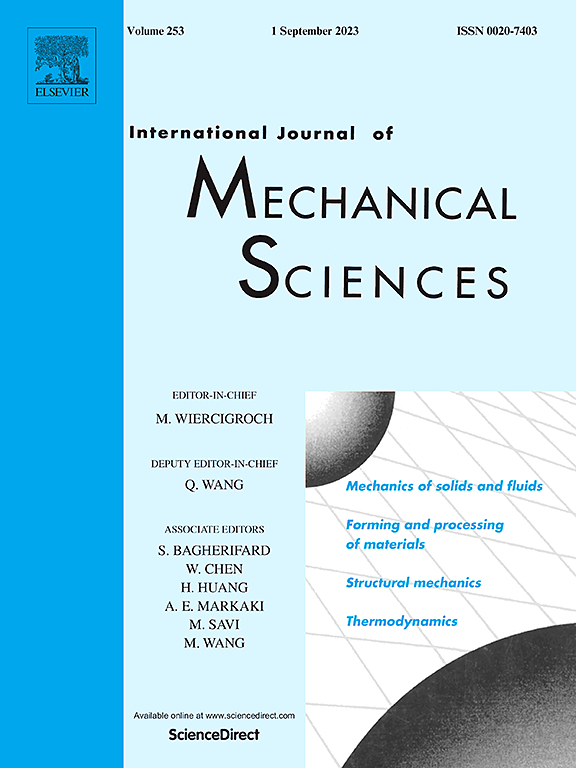Simulation-driven machine learning for real-time damage prognosis in masonry structures
IF 7.1
1区 工程技术
Q1 ENGINEERING, MECHANICAL
International Journal of Mechanical Sciences
Pub Date : 2025-02-18
DOI:10.1016/j.ijmecsci.2025.110055
引用次数: 0
Abstract
Static structural health monitoring of masonry and heritage structures typically consists of tracking crack width evolution over time. However, the health evaluation of the current structural condition is not easily relatable to the actual cracks widths. In this paper, crack patterns in masonry walls are related to a stress increase indicator based on data generated through simulations employing accurate block-based numerical models of masonry walls damaged by differential settlements- and earthquake-like scenarios. Such stress increase indicator is defined through a percentile of the static cumulative minimum principal stresses distribution in a damaged wall, so it can be straightforwardly related to the occurrence of crushing failure. Driven by this simulation-generated dataset, a machine learning predictor is trained, validated and tested to provide stress increase indicators in damaged masonry walls by using as only input the crack width distributions of the walls. This allows to originally provide a crack pattern-based real-time damage prognosis tool in static monitoring of cracked masonry walls and structures.

求助全文
约1分钟内获得全文
求助全文
来源期刊

International Journal of Mechanical Sciences
工程技术-工程:机械
CiteScore
12.80
自引率
17.80%
发文量
769
审稿时长
19 days
期刊介绍:
The International Journal of Mechanical Sciences (IJMS) serves as a global platform for the publication and dissemination of original research that contributes to a deeper scientific understanding of the fundamental disciplines within mechanical, civil, and material engineering.
The primary focus of IJMS is to showcase innovative and ground-breaking work that utilizes analytical and computational modeling techniques, such as Finite Element Method (FEM), Boundary Element Method (BEM), and mesh-free methods, among others. These modeling methods are applied to diverse fields including rigid-body mechanics (e.g., dynamics, vibration, stability), structural mechanics, metal forming, advanced materials (e.g., metals, composites, cellular, smart) behavior and applications, impact mechanics, strain localization, and other nonlinear effects (e.g., large deflections, plasticity, fracture).
Additionally, IJMS covers the realms of fluid mechanics (both external and internal flows), tribology, thermodynamics, and materials processing. These subjects collectively form the core of the journal's content.
In summary, IJMS provides a prestigious platform for researchers to present their original contributions, shedding light on analytical and computational modeling methods in various areas of mechanical engineering, as well as exploring the behavior and application of advanced materials, fluid mechanics, thermodynamics, and materials processing.
 求助内容:
求助内容: 应助结果提醒方式:
应助结果提醒方式:


